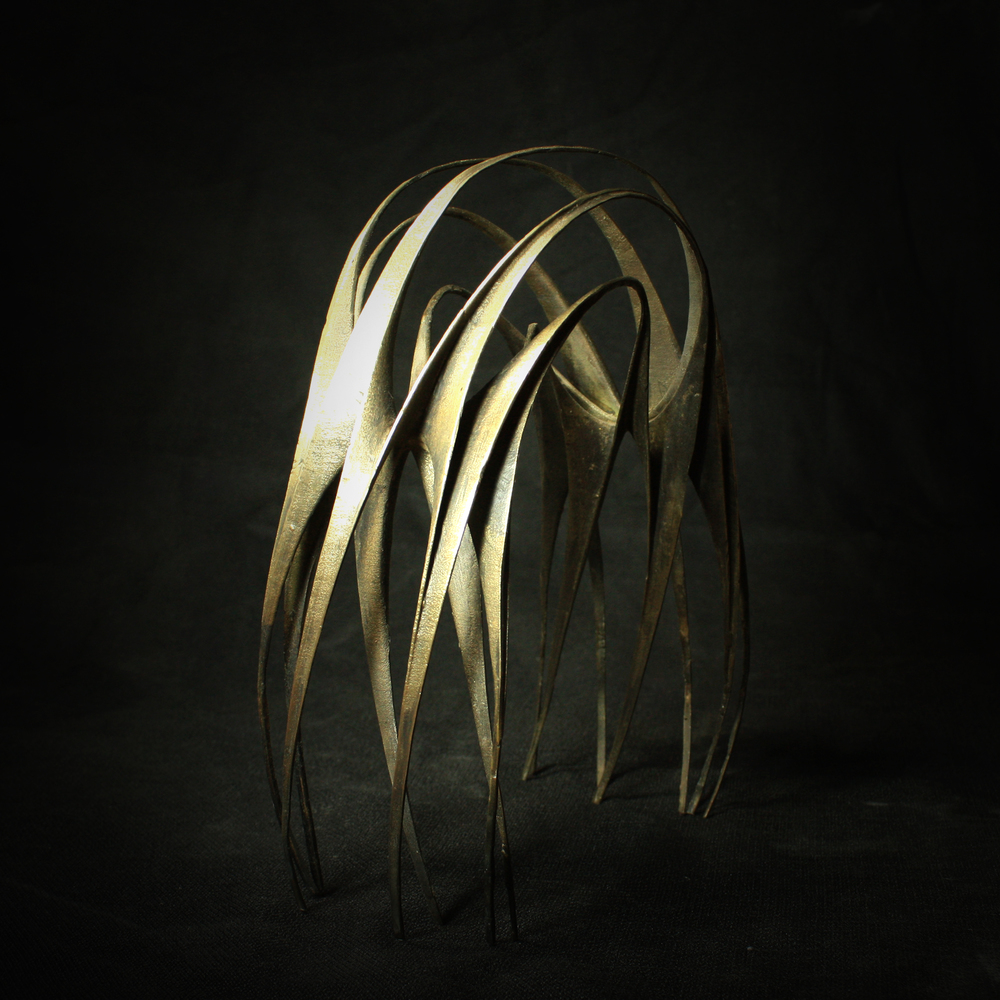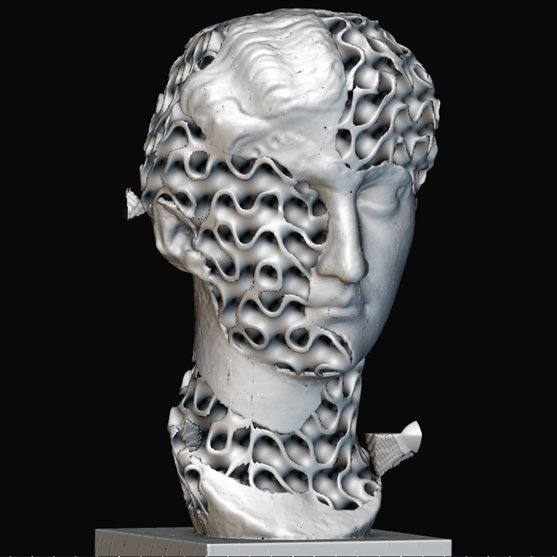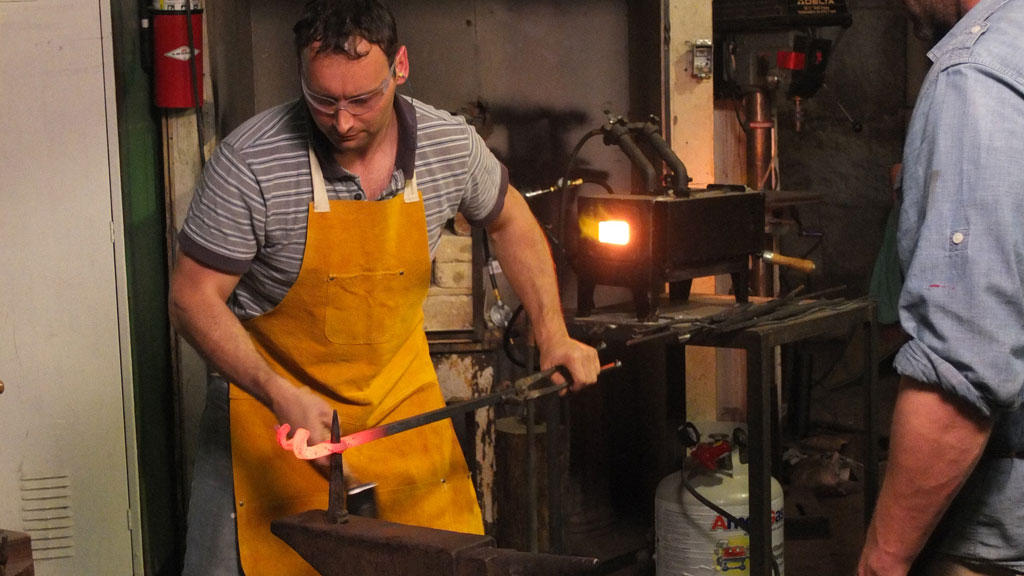I was probably 5 or 6 years old when my father taught me how to straighten out a piece of steel on the anvil. Beautiful shapes can be created with just a hammer repeatedly hitting the right spots. He was an artist blacksmith, so the forging of repetitive elements to fill shapes and volumes was part of his daily work to create railings, staircases, and artistic gates.
Working with my father first and studying, practicing, and then art and architecture later interested me in pattern design and control.
Patterns are usually used in art and architecture to create a visual connection with the viewer and convey a message, creating a sense of order by relating the architectural design to its archetypal meaning. Whether in color, spatial distance, angle, curvature—patterns create the personality of the piece. Looking around, we will find patterns everywhere in natural and artificial things.
Decorations such as tiles on walls, floors, textiles, furniture, or repetitive structural elements like columns or arches are all elements that can create a visual rhythm and repetition. This is how artist and architects establish a visual rhythm that guides the viewer's eye, evoking a sense of movement, energy, or calmness, depending on the specific pattern employed. The use of these patterns for symbolic meaning or their psychological impact is often used to control the artist's narrative and tell stories.
Personally, my personality lies in tension between the artist and the scientist, because I have always been fascinated with patterns in nature as well. I especially love tessellations, the repeating patterns of shapes that fit together perfectly without gaps or overlaps. Honeycomb structures, soap bubbles, spiderwebs, and bird feathers are all examples of tessellations that optimize space utilization and provide efficient structures.
As a sculptor, these types of scientific elements became my fascination and my medium.
Seeking to use such structures in my sculptures, I first tried traditional techniques such as carving, modeling, or mold making. Using mostly metals for my artwork, I initially found the 5,000 year old lost wax casting technique the most suitable for my work in bronze and aluminum.
In the past, the Greeks and later the Romans reached a summit of artistic excellence in the art of bronze statuary—especially in terms of their colossal size. These sculptures were hollow, because the lost-wax technique involved the creation of a non-bronze internal space which was then removed to leave a hollow bronze shell. After making a positive model nearly the size of the desired sculpture, artists coated it in wax and refined the details directly on the thin wax surface. The entire model was then covered in clay by using rods passing through the internal part of the statue. The wax was then melted away, and bronze was poured into the negative space left by the melted wax.
After exhausting these methods, it was natural to explore digital techniques.
With advancements in technology, artists can now utilize digital
tools and computer numerical control (CNC) machines to create paterns in sculpture. Computer-aided design (CAD) software can be used to construct complex patterns, which can then be machined or 3D printed to create sculptures with precise and intricate patterns impossible to make by hand.
I was studying for my MFA in sculpture when 3D printing became more accessible.
With advancements in technology and the expiration of key patents, Fused Deposition Modeling and SLA (Stereolithography) became more affordable, and in the early 2010s, several companies started producing cheaper desktop 3D printers. These printers were smaller, simpler to operate, and had a lower price point compared to industrial-grade 3D printers.
My initial research was on 3D printed thermoplastic materials, because I could easily print to a wax sprue and cast it in bronze and aluminum.
I started designing and making minimal surfaces I could modify in wax, and I created a series of small sculptures, especially using Scherk surfaces.
Later, I tested more complex technologies for binding with plaster and foundry sand. With 3D printers such as ExOne and Voxeljet, I had the opportunity to improve mechanical qualities by infiltrating much bigger 3D printed sculptures with epoxy resin.

This series of sculptures printed with silica sand were finished with a coating of epoxy resin mixed with fine bronze powder or aluminum powder. This way, I could use traditional metal patinas—typically used on casted metal—on 3D printed parts.
When I saw how Additive Manufactory could be used to create intricate parts impossible to make by hand, I started using more complex patterns and lattice structures as integral parts of the sculpture.
Rather than going through the lost wax casting method like the ancient Greeks and Romans, today Additive Manufacturing technologies allow printing in metal of sculptural or mechanical models without the need for a core to support the model.
Instead of a hollow space, the model's internal part can be filled with lattice structures for structural and aesthetic reasons. Using generative design and changing various process parameters, lattice structures can be created with specific electrical, mechanical, thermal, and acoustic properties. For this reason, such structures have been researched mainly for technical, rather than artistic, applications.
But I have made science a handmaiden to art once more, exposing these lattice structures to the viewer’s eye and revealing the internal dynamism of the piece.
One of the first sculptures I created by using lattice structure was inspired by the Adam's Hand, the first fully-adaptive myoelectric bionic hand, which allows amputees to grasp objects.
First, I modeled the hand in 3D and designed a spiral opening all around it. The lattice was only applied to the internal structure, leaving the right thickness for the external surface.
When the model was done, I 3D printed it in plaster and infiltrated it with epoxy resin. The base in alabaster gives a nice support for the sculpture and makes it stable.

Another example from among my pieces is the noblewoman. In this modernization of a traditional Roman portrait, part of the subject’s face reveals the internal lattice structure that was designed to follow the facial features.
My artistic research and creative choices in lattice structures are just beginning, and I hope to soon unlock the full potential of generative design, topology optimization, and lattice structures for Additive Manufacturing in sculpture.
The combination between Lattice Structure and Generative Design offers obvious advantages, especially with respect to solid artworks, like weight saving and aesthetic characteristics. The goal is to design balanced geometry so that the resulting structure will meet the same strength requirements as its fully solid counterpart, while being considerably lighter.

As this new artist’s tool gains popularity and increases its effectiveness, I expect ever-more creative explorations of what can be done to juxtapose the traditional with the futuristic. My father’s blacksmithing techniques, and any new technique, is a technological advance of the same kind. Now, the finesse that we have achieved will unlock a generation of interesting and thought-provoking artwork—and I am eager to see and be part of this current.
Davide Prete is an Italian-American sculptor. His medium is metal, but he also specializes in new technologies such as 3D scanning and printing. Visit his gallery at davideprete.com.